 roducing the Tokaji Asz˙
roducing the Tokaji Asz˙ roducing the Tokaji Asz˙
roducing the Tokaji Asz˙
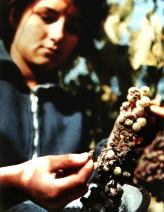
There are those who believe that Tokaj Asz˙ "grows" from particular grapes. Both ideas are false. Asz˙s are not produced every year if the conditions do not warrant it. Asz˙ can only be produced from grapes that have an affinity for "Botrytis Cinerea" mold. Tokaj Asz˙ comes only from the Tokaj-Hegyalja region, where it is a blend of Furmint and HßrslevelŘ (Limeleaf), occasionally from Muscat and Oremus varietals.
Asz˙ berries develop only during long, warm autumns. After a rainy, wet summer, the berries are attacked by Botrytis. With the advent of dry, sunny weeks, the mold spreads to the unaffected berries. The sugar content of the berries is raised. In constant, rainy weather the Botrytis does not attack, instead a normal rot occurs, destroying the berries. Hail, the second enemy of the vines can dessicate an entire vineyard.
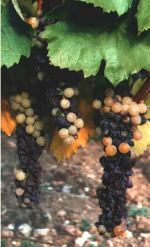
In sunny weather humidity from the rivers Bodrog and Theiss encourages the Botrytis to spread. Thinning and softening the berry skins, evaporation then occurs, shrinking the berries until they reach the driest (concentrated), most desirable state. Acidity thus limited is replaced by fine aromatic and fruity tones which are the earmark of a fine Tokaj wine.
The noble rot also encourages the development of substances important to the wines' character. The high sugar content competes with the characteristic acidity. In years when little Asz˙ developes, the "Szamorodni" or high quality white wines can be cellared.
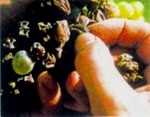 At harvest, the shriveled berries are sorted. A talented grape picker can pick 8-10 kg grapes daily. The berries are then placed in an open tub and with the help of a wine mixer smashed into a dough-like consistency, without macerating the grape seeds.
Then three, four, five or six puttonyos is placed in a Gonci barrel (ca. 136 liters) to which new wine is then added. Stirring occasionally, the mass is left to soften (16-48 hours). After pressing the juice is filled into wooden casks, leaving air room at the top of ten to twenty centimeters.
At harvest, the shriveled berries are sorted. A talented grape picker can pick 8-10 kg grapes daily. The berries are then placed in an open tub and with the help of a wine mixer smashed into a dough-like consistency, without macerating the grape seeds.
Then three, four, five or six puttonyos is placed in a Gonci barrel (ca. 136 liters) to which new wine is then added. Stirring occasionally, the mass is left to soften (16-48 hours). After pressing the juice is filled into wooden casks, leaving air room at the top of ten to twenty centimeters.
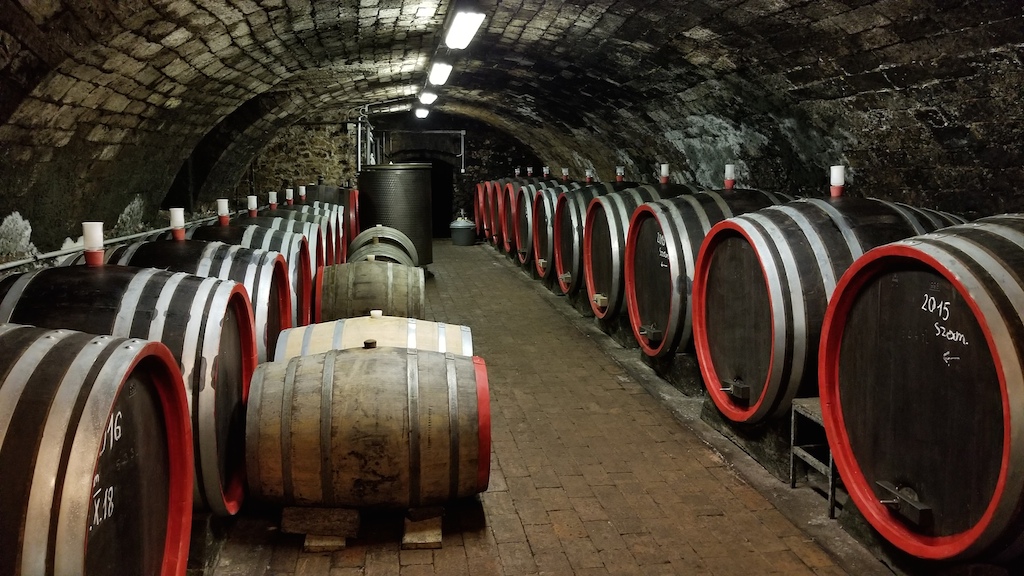
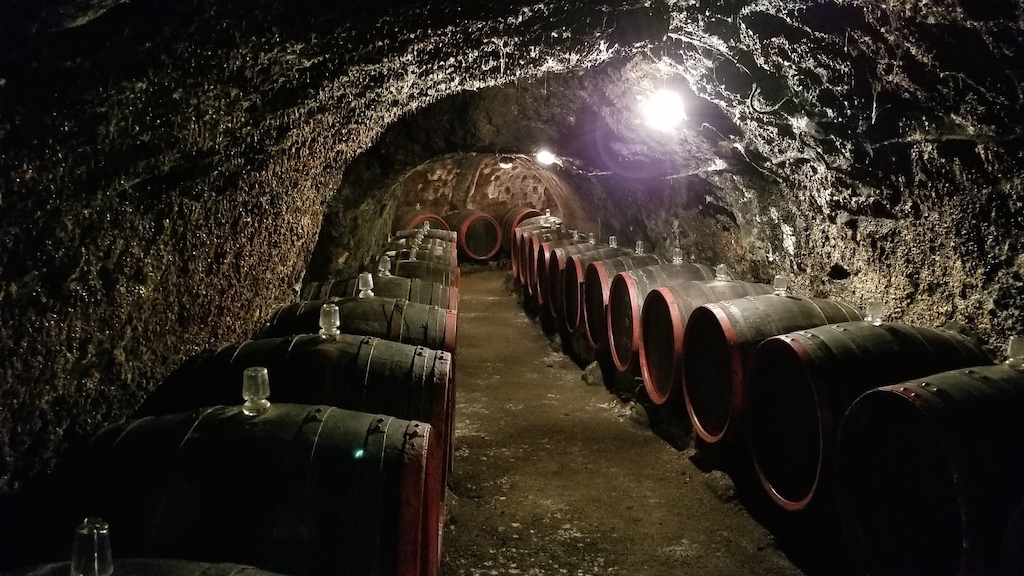
During the first year in the cask, the Asz˙ is transfered once again into another cask, in the second year it is transfered twice and in the third year it is transfered three times. The time of ripening is limited to a total of three to four years to conserve the fruitiness of the wine.
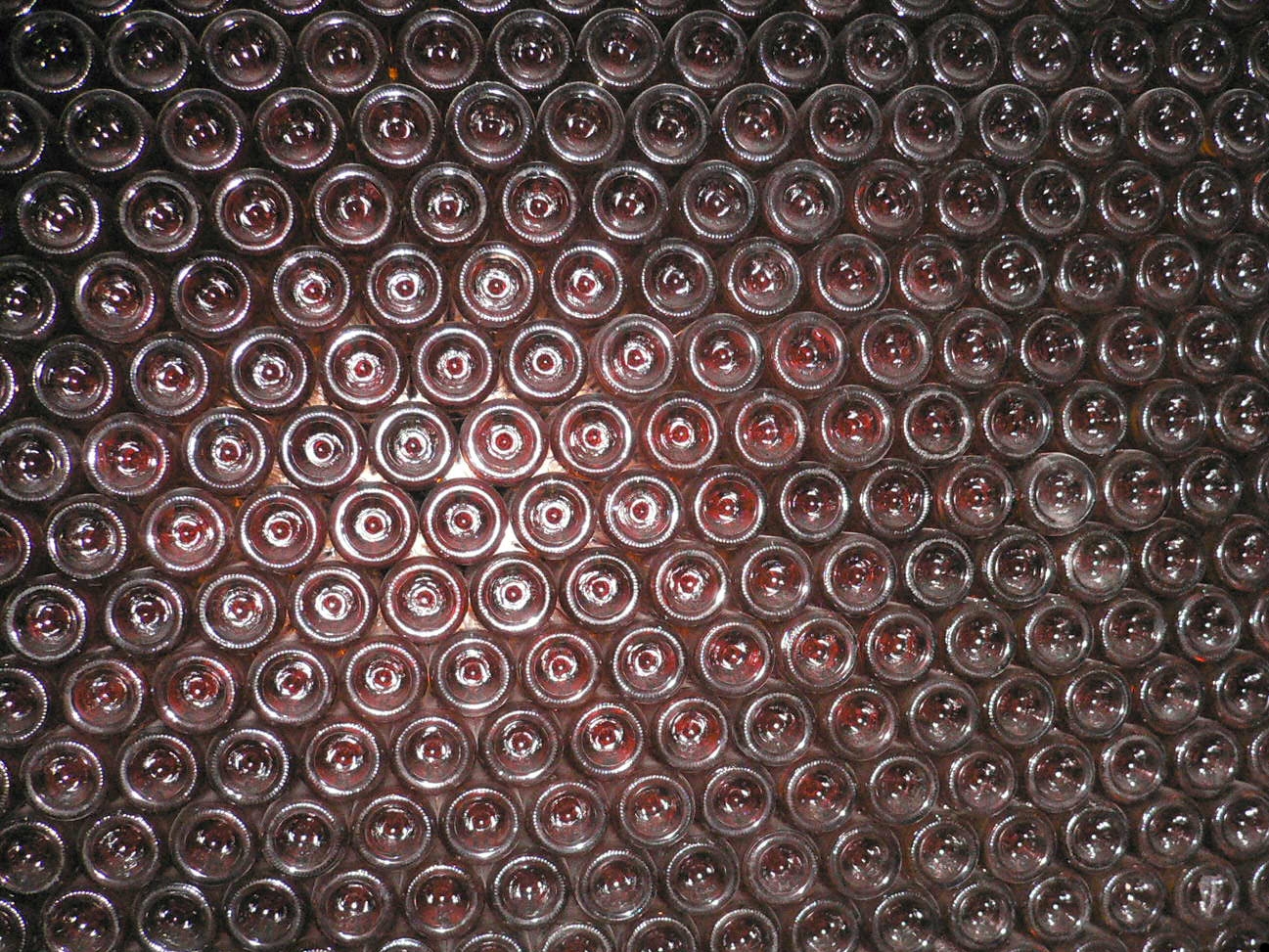 Bottled in a ripened state, the Asz˙ continues to develop even further. The higher its puttonyos, the longer it can remain in the bottle. The best Asz˙s can remain 200-300 years in the bottle without loss of quality but they cannot be considered for sale.
Bottled in a ripened state, the Asz˙ continues to develop even further. The higher its puttonyos, the longer it can remain in the bottle. The best Asz˙s can remain 200-300 years in the bottle without loss of quality but they cannot be considered for sale.
In earlier centuries, vinters prepared 1-2 puttonyos Asz˙s; presently the style is 3-6 puttonyos. The greater the puttonyos, the high the sugar content, producing sweeter Asz˙s.
The sugar-free extract is approx. 30g/l for the 3 puttonyos Asz˙ and for each puttonyos 5 g/l higher. Thus the 6 putt. Asz˙ registers 45 g/l extract. The Asz˙s contain a mixture of Furmint, honey, nut, yeasty bread crust, yellow melon, apricots and peach aromas with a very long aftertaste. It is not a liquer wine as many imagine and is not a fortified wine, such as Port, Marsala or Madeira wines. On the contrary, Asz˙ is a naturally sweet wine.
Tokaj Asz˙ complements goose liver (foie gras) or goose liver patÚ as well as blue cheeses. It is a wonderful accompanyment to many desserts and sweets (e.g. chocolat). One can also drink it as an aperetif. A glass of Asz˙ can brighten a dreary day!
Once opened, and unlike other opened wines the bottle of Asz˙ can be corked and placed in the refrigerator or a cold place, without damaging the taste of the wine. Both Asz˙ and Asz˙-Essencia can keep for decades in the bottle.
The Muscat-Asz˙ although of lesser fame, also finds a place in the hearts of gourmets.